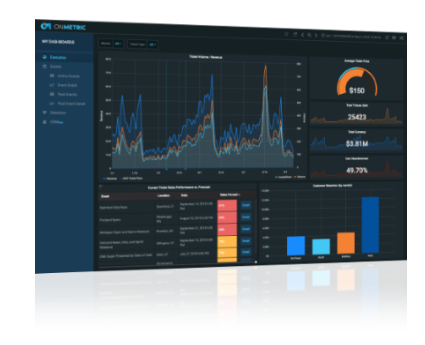What is Ticket Science?
Endurance events remain popular and demand is high. On the other hand, the popularity of endurance events and race events in general has generated many new events. The number of events is growing at a faster rate than the participant pool, so competition between events is more fierce than ever before. Endurance event companies face the persistent challenge of filling their events, maintaining a high average ticket value (ATV) and minimizing cost of acquisition.
Race directors and event companies have to find new ways to gain competitive advantage. An obvious avenue is to apply a scientific methodology to their ticketing strategy. Collectively this is Ticket Science™, the practice of using past, present, and forecasted ticket sales, combined with relevant customer data, to inform business decisions, drive action, and produce results. However this can be hard to achieve because their data is all over the place in various systems with very little consistency. OnMetric has solved this challenge and made advanced ticket science attainable, and while not the silver bullet, is a potent weapon in the war.
Race directors, promoters, and race management companies, in data-poor environments, often are forced to rely on “gut” feelings and guesswork to make critical business decisions, such as ticket pricing, marketing spend, and merchandise purchases. Many companies use spreadsheets to manually export and extract their data. However, this often delivers outdated and incomplete information. Databases from registration and ticketing vendors lack standardization and relational linkage, eliminating opportunities to correlate, measure, cross-compare, forecast, and draw meaningful conclusions.
Understanding ticket sale trends is critical. Novice companies often adopt a linear ticketing strategy. For example, if a company has 180 days to sell 9000 tickets, their goal is to sell 50 tickets a day. In reality, event ticket sales adhere to a “build model,” which follows a different purchase behavior than standard product sales. Each brand and event has a different build model variation, which is influenced by a number of intervening factors. This linear model is too simplistic and fails to account for the consumers complex and unique purchasing behavior and the various elements that influence it.
OnMetric pairs advanced industry expertise and technical prowess into a solution tailored to the events industries’ specific needs and challenges. Our solution uses a proprietary modelling algorithm to analyze historical sale patterns, provide unprecedented insights, and forecast reliable sale trajectories. When applying OnMetric’s Ticket Science™, event companies will reduce cost of acquisition, maximize average ticket value, and increase lifetime customer value. These key performance indicators are hidden in your data and OnMetric’s Ticket Science™ unlocks these untapped indicators to optimize profit and establish a loyal customer base.
Cost of Acquisition (CoA)
Before a companies can build customer loyalty, they first must develop a base of new customers. Communicating a company’s brand and event to a new audience, in the midst of competing marketing campaigns, requires a substantial investment of time, money, and creativity. Deploying an ad-hoc marketing strategy will most likely deplete resources and prevent potential business growth. OnMetric’s tool set enables customer segmentation and micro-targeting, which will subsequently, lower CoA, preserve marketing spend, and improve conversion.
Average Ticket Value (ATV)
Optimizing ticket prices, over the registration period, is highly complex and often counterintuitive. A ticket priced too low will devalue it and impact perception. A price set too high may cause a potential customer to turn to your competition or entirely abandon their purchase. Some companies shy away from dynamic pricing for fear that they will lose or alienate potential customers. However, the ROI of an optimized pricing strategy is high. The Harvard Business Review claims that a 1% improvement in pricing can add up to 11% to profits. While improving your pricing model can result in success, without analyzing the data, it’s nearly impossible to measure it. OnMetric’s platform optimizes ATV by setting specific goals, tracking data in real-time (both globally and per-event), and allowing you to immediately see the product of your actions.
Lifetime Customer Value (LTV)
Customer loyalty is the most effective way to optimize marketing investments. According to Marketing Metrics, the probability of selling to a new prospective customer is 5%-20%, whereas the probability of selling to an existing customer is 60%–70%. Returning customers reduce your cost of acquisition by referring more potential customers to your company.
A Harris Poll survey determined that 82% of Americans seek recommendations when making a purchase of any kind and 67% claim they are more inclined to buy a product if a family or friend shared it through social media or email. A loyal customer base is a company’s strongest marketing asset and customer data unlocks new ways to earn loyalty.
OnMetric maximizes LTV by monitoring customer retention from an event and segment basis. OnMetric provides event companies the ability to target prime customer groups in a personalized, strategic manner, which in the past, was nearly impossible to achieve.
